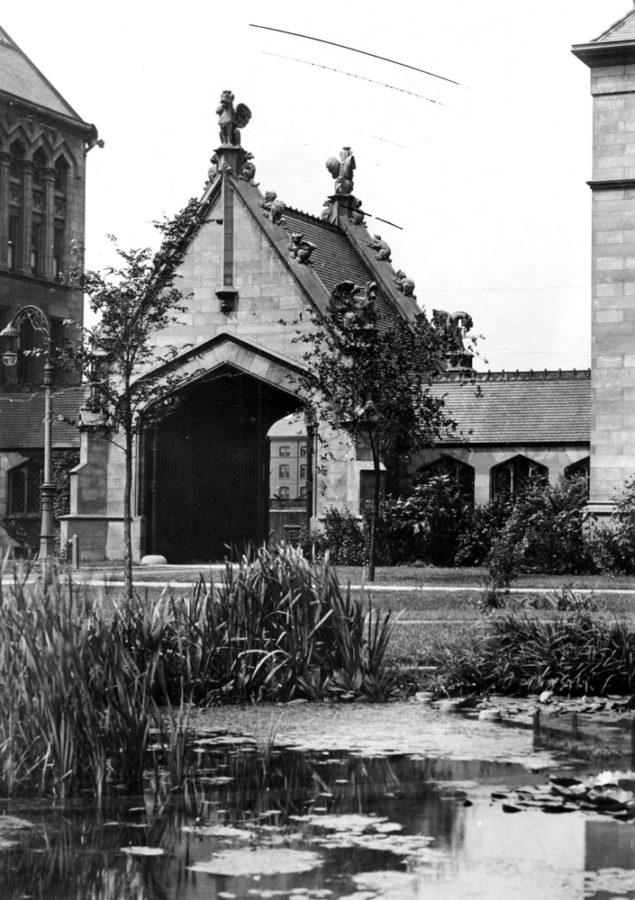[img id=”77120″ align=”alignleft”] According to the Department of Homeland Security (DHS), the likelihood of a terrorist attack occurring right now, or sometime during your lunch at Cobb, or right as you’re swiping your card at the Reg to print contraband PDFs at the A-level, is “yellow.” Or, to put it more directly, there is an “elevated” risk of a terrorist attack on American soil.
That news shouldn’t come as much of a surprise, of course. Today marks the five-year anniversary of the last time the nationwide terror alert level changed. 1,826 days have passed since then, when DHS secretary Tom Ridge lowered the tint on his ingenious, five-tiered color-coded alert system, downgrading America’s collective risk from “high” to “elevated.” The threat level for the nation’s airports, meanwhile, is four months into its third consecutive year at “high.”
Elevated and high, of course, are two ways of saying the same thing, but a limited vocabulary and a color code better suited for a “test your strength” game at the county fair have been the least of the agency’s problems during that time.
Since its inception in 2002, DHS has developed a well-earned reputation as the most unproductive agency in a federal government with more than its just share. If the Government Accountability Office’s reports are any indication, DHS employees are among the most unhappy, inefficient, and under-qualified in all the federal government. Given its haplessly reactionary security measures (no bottled water or hair gel on airplanes, for instance), it’s no stretch to believe that if there were to be a terrorist attack, the Department of Homeland Security would be the last to know.
In light of this, ABC’s newest reality-mentary, Homeland Security U.S.A., only exacerbates one of the federal government’s largest trouble spots.
The show, which premiered last week from the producer of Big Brother, takes a behind-the-scenes look at the agents and officers who “safeguard our country and enforce our laws.” As the show’s producer, Arnold Shapiro, put it, “they’re ordinary men and women working against an epic landscape.” That is to say, expect lots of footage of drug busts, counterfeit documents, and, as one Border Patrol officer artfully puts it, “the illegals.”
For the most part, the show named for an agency named for a piece of legislation named by Joe Lieberman lives up to the exceedingly low standards set by DHS—full of patriotic sound bites, but doing little to warrant such a lofty moniker. In one early scene, Border Patrol agents draw their weapons as they approach a suspicious vehicle at a Mexico–California border checkpoint. A husband, wife, and kids are forced out of the vehicle, accents plain for all to hear, pleading innocence as the officers proceed with caution.
In the end it turns out that the father had simply been subject to a mishap familiar to Ted Kennedy, and the hundreds of other Americans who have found themselves on the wrong end of the federal “No Fly List”: Customs and Border Patrol agents mistook him for somebody else.
While the presumption of guilt was eventually overturned and the family entered the U.S. free to go to Wally World or wherever else they choose, the fact that the producers highlighted this clip as something other than just an embarrassing mix-up is far more damaging. Spotlighting the near-arrest of an innocent, Hispanic family as the work of agents just doing their job sends a disturbing message: You just can’t be too careful with these people.
Transportation Security Administration officials, meanwhile, who normally exude all the charm and alertness of the people who swipe your card at Ratner, come off as exceedingly out-of-character. One uniformed TSA officer at LAX, presumably fresh from checking the latest batch of stilettos for stray warheads, breaks into tears while explaining why he does what he does (shocking answer: to keep you safe).
And in one particularly telling moment, one officer at LAX turns to the camera after interrogating a would-be belly dancer from Switzerland, who arrived in the United States without a work visa. “Most people wouldn’t think she’s related to national security, but you never know,” the agent says.
After seven years and one episode, you could be forgiven for drawing the same conclusion about the agency that bears it name. And therein lies the original sin of DHS. Unlike, say, “Defense” or “Treasury” or even “Housing and Urban Development,” the Department of Homeland Security is not so much a civil institution as a euphemism. Its name reflects the post-9/11 branding that produced “Operation Enduring Freedom” and the “USA PATRIOT Act,” but the DHS has never shown signs of transcending the Us vs. Them mindset of its founding. And seven years later, the agency, like the show, is still stuck with a catchy title and an overly broad, Us vs. Them worldview.
As the officer, speaking to the camera, said of the belly dancing “Swiss miss,” “I don’t have enough information to determine whether she’s good or bad.”







